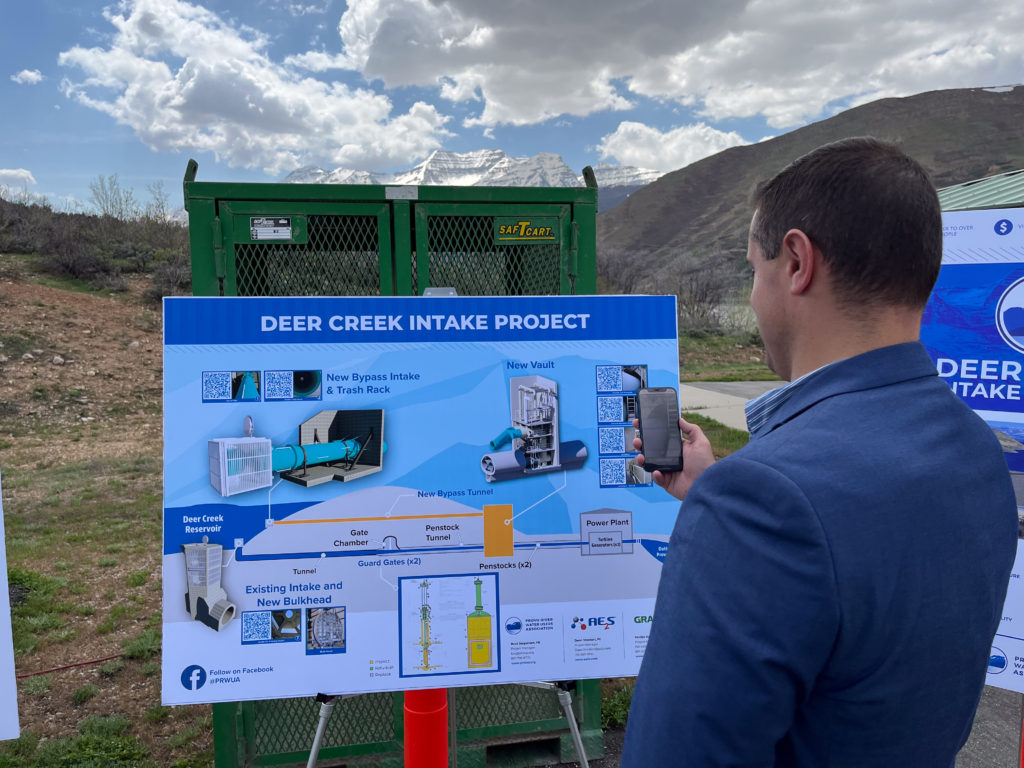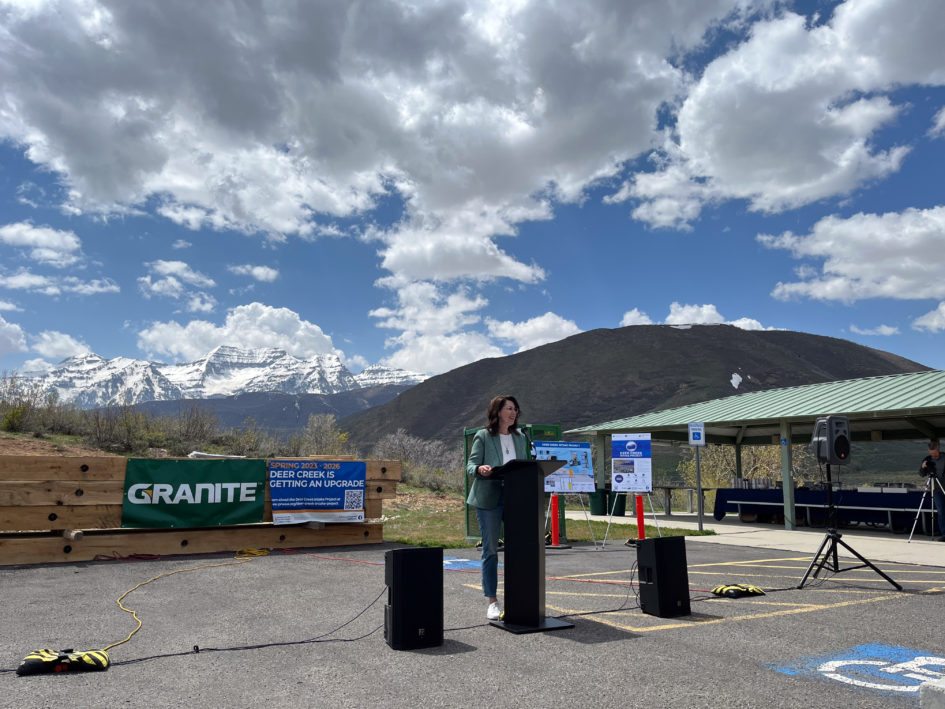A groundbreaking event in a picturesque setting amongst the Wasatch Mountains in Utah recently kicked off an innovative project that involves constructing in the wet. The Deer Creek Dam and Reservoir is located 20 miles east of Provo, up in the heart of Provo Canyon. The reservoir stores water to serve 1.5 million people, almost half of Utah’s population, while the dam manages water flow and plays an important role in water supply and flood mitigation.
Aging Infrastructure in Need of Upgrades
The Bureau of Reclamation built the earthen Deer Creek Dam in the 1940s and added a power plant in the 1950s. “Some of the same engineers from the Bureau who worked on the historic Hoover Dam also worked on the Deer Creek Dam,” says Deon Stockert, AE2S Strategic Client Leader.
Deer Creek Reservoir is filled by snowmelt water that comes from the Wasatch Mountain Range through a series of reservoirs, lakes, and streams, and provides flow downstream for the Provo River. More than 80 years later, the original infrastructure associated with the dam and reservoir is beginning to show its age. The Bureau of Reclamation subcontracts the operations and management of the infrastructure facilities to the Provo River Water Users Association (Association).
When the Association began looking into options for upgrading the dam’s intake and guard gates, the recommendations of a previous study consisted of draining the reservoir to complete the necessary construction. The option led to concerns about maintaining service to 1.5 million Utahns, as well as how the Association could ensure the water rights of other users who also need access to their water supply.
Constructing in the Wet to Maintain Service
The AE2S team proposed a different approach to the Association. “In my 30 years of helping improve water systems, I had experience with in-the-wet construction methods. I reached out to some of my diver friends and construction colleagues to discuss potential options, including a Corps of Engineers project in Kentucky,” explains Stockert. ”We developed a Deer Creek Intake solution that could be constructed in-the-wet to prevent water service interruptions to downstream shareholders and simplify the environmental permitting process.
The Deer Creek Reservoir is about 140 feet deep, and there is 100 feet of limestone below it. Due to the age of the Deer Creek Dam and Reservoir and its continuous use for more than 80 years, nobody had been able to get an up-close view of the intake tunnel and guard gates since it was constructed. AE2S, the project’s engineer and designer, utilized a remote operating vehicle (ROV) to inspect the intake components to give the Association staff their first look at the underwater portions of the facilities they are tasked with operating and maintaining. The photos, videos, and multipoint data gathered by the ROV helped AE2S engineers as they recommended which replacement parts of the guard gates to be refurbished or rebuilt.
“The original design never included a way to shut off the flow from the intake, so we designed a bulkhead that will act as a large bathtub plug so the original intake and tunnel can (for the first time ever) be taken offline and inspected,” explains Stockert. “A 72-inch pipe and vault will be added to temporarily bypass the intake. We will need to microtunnel through the mountain for about 900 feet. Ultimately, the bypass will allow the Provo River to continue flowing while the original infrastructure is taken offline for inspection and improvements during the project.”
Another important aspect of the project is to prevent quagga mussels from attaching themselves to the Deer Creek Reservoir infrastructure. The Association is committed to keeping Deer Creek Reservoir free of the aquatic invasive species. AE2S worked with Bureau of Reclamation engineers to identify foul release coatings that can prevent quagga mussels from attaching to the intake screen for up to 20 years.

Groundbreaking Celebrates Beginning of Intake Project
On May 12, about 90 attendees gathered to celebrate the groundbreaking of the Deer Creek Intake Project. Utah Lieutenant Governor Deidre Henderson used an excavator to ceremonially dig the first bucketful of dirt. The historic event also included many Utah legislators who gathered to celebrate the construction milestone. Attendees were able to view 3D renderings of the future facilities using QR codes on the event posters. Granite Construction is the contractor selected for the project, which is expected to be completed in 2026.

